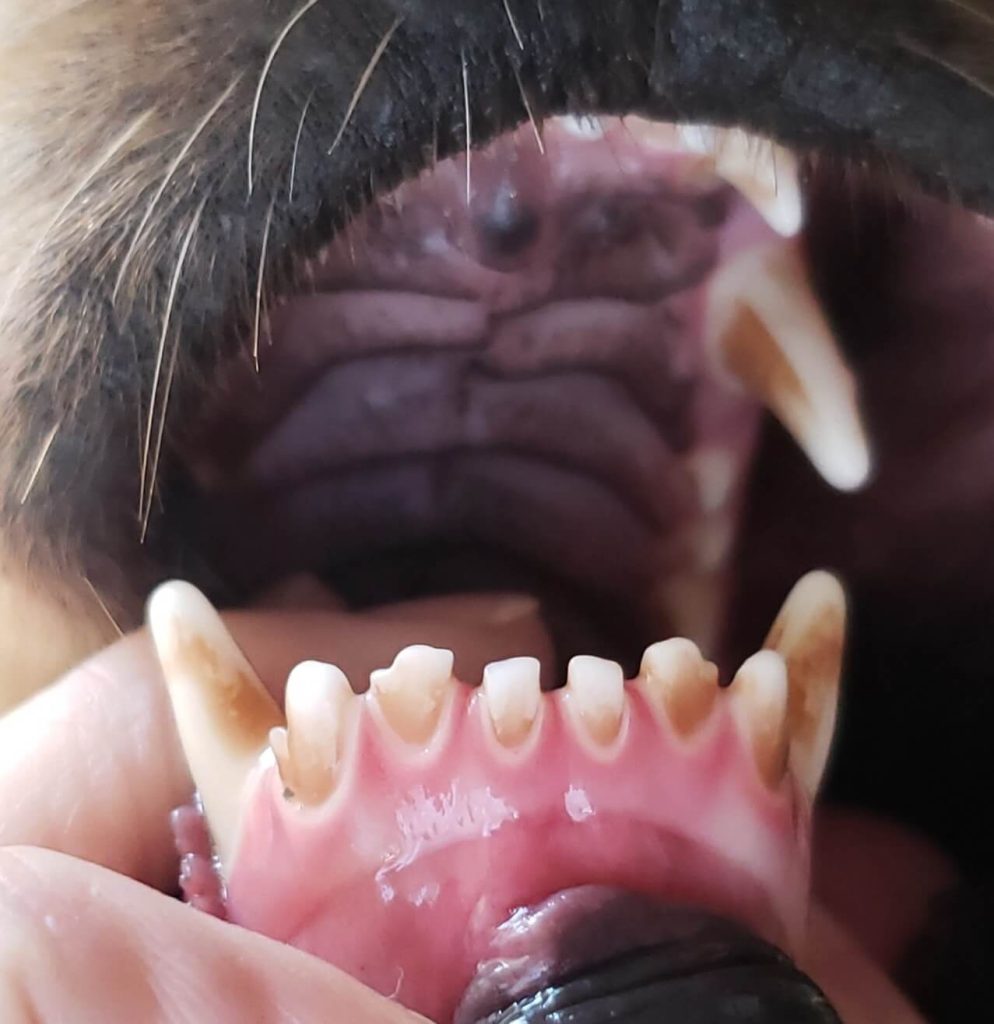Periodontal disease is a common yet often overlooked health concern in dogs that can lead to severe dental problems and even affect their overall well-being. As responsible pet owners, it’s crucial to understand the causes, symptoms, prevention, and treatment of periodontal disease in dogs. In this article, we will delve into the world of canine periodontal disease, shedding light on this condition and providing practical solutions to ensure your four-legged friend’s dental health.

Understanding Periodontal Disease in Dogs:
Periodontal disease, often referred to as gum disease, is a dental condition that primarily affects a dog’s gums and the structures supporting the teeth. It is caused by the accumulation of plaque, a sticky film of bacteria, on the teeth. Over time, plaque hardens into tartar, which can lead to gum inflammation and dental problems.
Common Causes and Contributors to Periodontal Disease:
- Plaque Buildup: The primary cause of periodontal disease is the accumulation of plaque and tartar on a dog’s teeth.
- Bacterial Infection: The bacteria present in plaque can lead to gum inflammation and infection.
- Poor Dental Hygiene: Inadequate dental care and infrequent brushing can exacerbate the issue.

Symptoms of Periodontal Disease in Dogs:
Recognizing the signs of periodontal disease is essential for early intervention:
- Bad Breath (Halitosis): Persistent foul breath is a common early sign of dental issues.
- Gum Inflammation: Red, swollen, or bleeding gums are indicative of gum disease.
- Tooth Mobility: Loose or missing teeth may occur in advanced cases.
- Drooling: Excessive drooling can result from dental pain or discomfort.
- Changes in Eating Habits: Reluctance to eat, chewing on one side, or dropping food can be a sign of dental problems.
- Pawing at the Face: Dogs may paw at their mouths to alleviate pain.
Prevention and Treatment of Periodontal Disease:
- Dental Hygiene: Establish a regular dental care routine, including brushing your dog’s teeth with a pet-specific toothbrush and toothpaste.
- Dental Chews and Toys: Provide dental chews and toys designed to help remove plaque and tartar.
- Professional Dental Cleaning: Schedule routine dental cleanings with your veterinarian to remove tartar and assess your dog’s oral health.
- Special Diets: Some specially formulated dental diets may help reduce plaque and tartar buildup.
- Oral Care Products: Use oral rinses, gels, and dental wipes as recommended by your vet.
- Surgical Intervention: In severe cases, your veterinarian may recommend tooth extraction or other surgical procedures.

Periodontal disease in dogs can lead to pain, discomfort, and dental problems that affect their quality of life. By recognizing the symptoms, establishing a regular dental care routine, and seeking professional dental cleanings, you can ensure your canine companion enjoys better dental health. Consult with your veterinarian for guidance and follow a tailored treatment plan to help protect your furry friend from the risks of periodontal disease and maintain their overall well-being.
